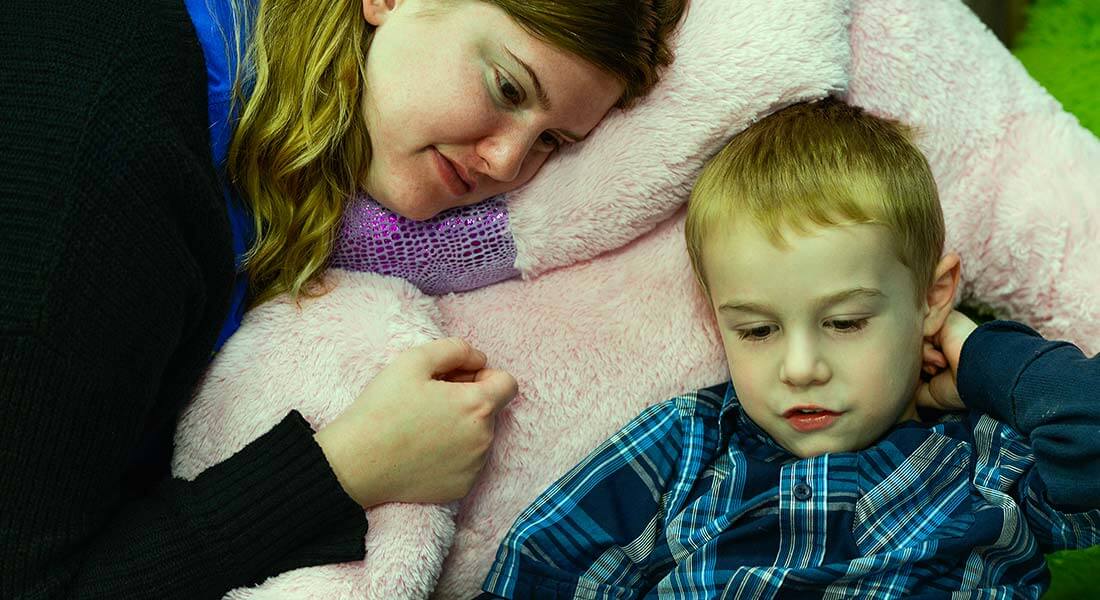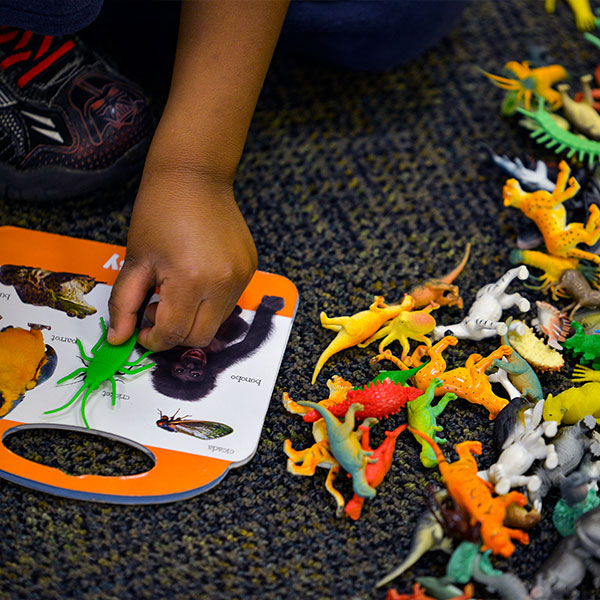How Can I Impact My Child's ABA Therapy? Learn from a Hopebridge BCBA Series
August 21, 2018
August 21, 2018

No one knows your child better than you do. At Hopebridge, our team combines experts in behavior, speech and language, motor skills and more, but YOU are the expert on your child. That is why a caregiver’s role in applied behavior analysis (ABA therapy) and the comprehensive therapies within Hopebridge’s 360 Care program is crucial to success.
What should that role look like and how involved should you be? The answer varies among families, as each child is different, whether they have autism spectrum disorder (ASD) or another developmental delay. What remains true for most children, however, is the more involvement from families, the better the outcomes.

Clarissa Merchant, Hopebridge BCBA
To help you understand how you can directly affect your kiddo’s therapy and progress, Hopebridge Board Certified Behavior Analyst (BCBA) Clarissa Merchant gives us the scoop.
Caregivers are key to a child’s well-being and progress, so as part of our goal to lead children to more fulfilled lives, we must also engage their families. We recognize that families lead busy lives and it can be a lot to manage, especially for those with children who have autism or other delays or disabilities. While we don’t want to overwhelm anyone, the reality is we can work on something in our centers, but it needs to be practiced in the child’s home and community in order to see the results you desire.
There are two key reasons why parent involvement is significant:
As part of our Hopebridge 360 Care services,* we offer family education and guidance, also known to many as parent training. It’s important to note that this is not “training on parenting,” but rather, “behavior training for parents and caregivers.” We want to make it clear that we are here to support you, not tell you how to parent. Caregivers are the experts on their kids’ personalities and what they like; we are simply professionals on behavior.
Family guidance is new territory. There is a wide range of tasks we ask caregivers to participate in, depending on the child’s age and behaviors, as well as the amount of available time. We approach this part of the education by working with families on how to help their child manage behaviors that we want to see more or less of, such as more toileting independently or fewer dangerous tantrums.
It can start as simply as touchpoints once a week or month, where we provide updates on how they’re doing in therapy and whether they mastered any goals or if something is no longer going well. During this time, caregivers can also relay changes they’ve seen in the home or discuss their own questions. The process is very fluid and varies by child.

A task for a parent could be to observe their child while playing.
With some of our littles, this could consist of asking parents to observe a certain behavior in the home and jot down what they see so we can understand why it’s happening. It could also be something a little more involved, like having their child practice asking for things they want at dinnertime so he or she has more opportunities practice gaining language skills outside of therapy.
With families of older learners, caregiver involvement might look completely different. It could be taking a teenage son to his favorite comic store once a week so he can practice saying hello to the cashier to help him build his social skills. Just about anything practiced in therapy can also be targeted at home.
No matter what, we try to tailor the training to what caregivers need or request. This can include in-depth curriculum training and even books or printouts. Sometimes we utilize Autism Speaks’ Challenging Behaviors Tool Kit as a take-home resource for caregivers, or teaching protocols from Essential For Living. Another common practice is working through a feeding curriculum together in order to help kids eat a wider range of foods in the home.
All in all, we ask that families communicate with us. If something comes up, keep us in the loop and we’ll do the same. We’re here to provide support according to the family’s needs.
As therapists, we are lucky enough to witness and hear reports about many of our kids’ successes coming to fruition. One specific moment comes to mind in which the parents’ and kid’s hard work paid off.
While working in another center, I came across one little guy who was petrified by hair clippers. This is something we experience often with some of our patients, especially those with ASD or some kind of sensory defensiveness. If they were in view, he would be in tears, turn bright red and pull at his hair. His hair was growing to the point where it was in his eyes, so his parents wanted to work on it with him. To get started, we exposed him to clippers little by little as part of his therapy.
Kids getting haircuts in our Marion, IN Center
During training sessions, his parents and I discussed exposing him outside of the center as well, from laying clippers around to letting him feel them while they were buzzing but not on his head. These parents actually made time in their schedule to take him to a hair salon once a week. Even the sight of a salon was enough to trigger a pretty strong reaction, so following our team’s advice, the first time they went, they just sat in the parking lot before heading home. Eventually, he was sitting in the barber chair and able to play around in it. Soon enough, he was able to get a haircut in the salon!
It’s clear the parents’ role was critical for this boy. Unfortunately, it took a lot of time from their evenings, but it paid off in huge dividends.
Behaviors can change significantly because of parent participation. The training might seem unexpected and maybe a bit unusual at the start, but give it all you’ve got and over time, it should feel more natural and helpful.
Above all, we want to thank parents for allowing us to enter their lives, learn every nitty-gritty detail, and ride those celebrations and lows with them. It’s a privilege for us to serve them in that way.
Wondering how you can get more involved in your child’s program or learn more about the general therapy options at Hopebridge? Visit us online to set up a time to connect to someone about diagnostic, ABA and outpatient services available to you.
*Informed consent was obtained from the participants in this article. This information should not be captured and reused without express permission from Hopebridge, LLC.
Parenting Resources
August 20, 2020
Are My Child’s Tantrums Normal? - Learn from a Hopebridge BCBA